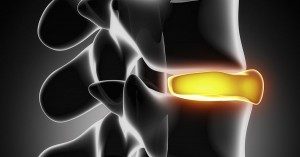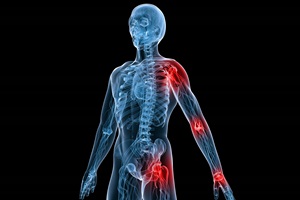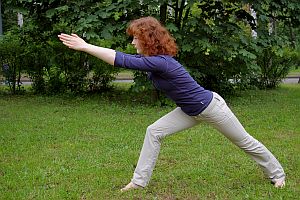4 Best Exercises for Improved Posture
Let’s face it. Good posture isn’t exactly a high priority for many Americans. Like most things related to our health and wellness, we don’t notice it until it’s gone.
Most of us live in a sitting culture—we sit at work, we sit at school, and we sit at home. The hard truth is that most of us sit too much and sit incorrectly. Beyond this, our love affair with mobile devices is amplifying the post problem by encouraging us to bend over, hunch our shoulders and crane our necks to look at small screens. Given our lifestyle choices, poor posture may seem almost inevitable. But it doesn’t have to be that way. For anyone with a bit of mobility, motivation and time, there are exercises you can do to improve poor posture. Here are four of the best types of exercises to help you improve your posture.
Exercises to Strengthen Your Core
A strong core is essential for good posture. Your core includes your abdominals, lower back, obliques, and hips. Strong core muscles don’t just give you an attractive “six-pack” to show off at the beach. In fact, they help hold your body up straight, improve your balance, and provide you with greater muscle control and efficiency. They’re also critical to maintaining back health and provide some measure of protection against injury. When your core muscles aren’t strong, other muscles have to compensate, which results in reduced mobility as well as weakness and even pain. So, to help avoid or reduce low back pain, try regular core training. Some core training exercises include basic crunches (but not full sit-ups), side planks, crunches with a twist, standing side bends, and plank holds. Doing Pilates is another great way to work out your core muscles, as are back extensions and slow swimming.
Exercises to Correct Your Rounded Shoulders
Because so many people spend their day hunched over while driving, sitting at a desk while working, using a laptop, or even watching television, rounded shoulders are extremely common—but they are in fact a postural abnormality. When you spend a lot of time in these forward-reaching positions, the muscles in your chest, shoulders, and hips become shortened and tight, and at the same time, your upper and middle back muscles lose strength. In order to help avoid and ease rounded shoulders, you can do exercises that strengthen the weak upper back muscles and stretch the tight muscles in the chest, shoulders, lats, and hips. As the upper back becomes stronger and the chest becomes more flexible, the shoulders naturally pull back, which improves your posture significantly. You can strengthen the upper back with exercises such as reverse dumbbell flys as well as rows with a resistance band, while you can stretch your tight muscles by doing standing chest stretches, torso stretches, and standing quad stretches.
Exercises to Neutralize Your Tilted Hips
Hips should be neutral and level when viewed from the side—however, some people have postural abnormalities stemming from their hips’ tendency to slant forward. This is called the anterior pelvic tilt, and it negatively affects posture. Lordosis (also known as “swayback”) is a common indication of this tilt. Seen very often in people who sit for hours every day with their legs bent, this abnormality is caused by weakness in the hamstrings, glutes, and abs as well as tightness in the hip flexors and thighs. Exercises to correct this tilt include the core exercises mentioned above as well as bridges, leg curls with a ball, and single leg hamstring flexions with a ball. Exercises that stretch tight hip and quad muscles include standing quad stretches and kneeling quad and hip stretches.
Exercises to Retract a Forward Head
Unfortunately, you can easily develop poor posture by tilting your head forward for hours every day. This happens when you drive, when you use a laptop or tablet, or when you watch television. When you fail to retract your head while performing everyday tasks, this tightens the front and side neck muscles and weakens the deep and rear muscles of the neck. The muscles at the front of your neck have to be strong enough to hold your head directly above—not forward of—the shoulders. Not only does this abnormality contribute to poor posture, but it also causes chronic neck pain. In order to retract a forward head, elongate the back of your neck by gently pulling your chin straight in. The highest point of your body should be the top back of your head. This works against the penchant to slip into a forward head posture. You can also work on this issue while driving: practice pulling your chin in and pushing your head into the headrest behind you for a few seconds at a time, then releasing. If you have a high-backed chair that you sit in at work, you can do this at your desk as well.

 Have you ever tried to blow up a balloon while someone was sitting on it? Obviously, this would not be an easy task. If you sit down and lean over, stretching your hands toward the floor in front of your feet, your breathing is far more difficult, because the two balloons in your chest—your lungs—cannot be filled as easily with air.
Have you ever tried to blow up a balloon while someone was sitting on it? Obviously, this would not be an easy task. If you sit down and lean over, stretching your hands toward the floor in front of your feet, your breathing is far more difficult, because the two balloons in your chest—your lungs—cannot be filled as easily with air. As we age, the discs in our spine start to naturally break down due to normal, everyday living . This is commonly referred to as disc degeneration and can result in pain in the neck and/or back area–pain that is felt by almost half of the population 40 years of age or older . For those over 80, this rate doubles to a whopping 80 percent, which makes understanding what factors promote this particular condition critical to raising the quality of life as we enter
As we age, the discs in our spine start to naturally break down due to normal, everyday living . This is commonly referred to as disc degeneration and can result in pain in the neck and/or back area–pain that is felt by almost half of the population 40 years of age or older . For those over 80, this rate doubles to a whopping 80 percent, which makes understanding what factors promote this particular condition critical to raising the quality of life as we enter  It’s no secret that some jobs are just more physically demanding and more dangerous than others. Some of the most challenging ones are obvious—combat roles in the military, fire and rescue, heavy construction and deep sea fishing are just a few that come to mind. However, when it comes to non-fatal musculoskeletal injuries, the statistics tell a very different story about occupational health and safety and about who’s most likely to get hurt on the job.
It’s no secret that some jobs are just more physically demanding and more dangerous than others. Some of the most challenging ones are obvious—combat roles in the military, fire and rescue, heavy construction and deep sea fishing are just a few that come to mind. However, when it comes to non-fatal musculoskeletal injuries, the statistics tell a very different story about occupational health and safety and about who’s most likely to get hurt on the job.


 If you are middle-aged (40-60, by some definitions) or older, here’s 15-second self-test for you. Do you often find yourself needing to sit down or steady yourself against a table when putting on your shoes or stepping into pants? Do you increasingly need to use the armrests of your chair to “push off” when getting up? Do you generally hold on to handrails whenever you go up and down stairs? If you stand with your feet close together, do you feel unsteady and unable to balance yourself properly?
If you are middle-aged (40-60, by some definitions) or older, here’s 15-second self-test for you. Do you often find yourself needing to sit down or steady yourself against a table when putting on your shoes or stepping into pants? Do you increasingly need to use the armrests of your chair to “push off” when getting up? Do you generally hold on to handrails whenever you go up and down stairs? If you stand with your feet close together, do you feel unsteady and unable to balance yourself properly?
